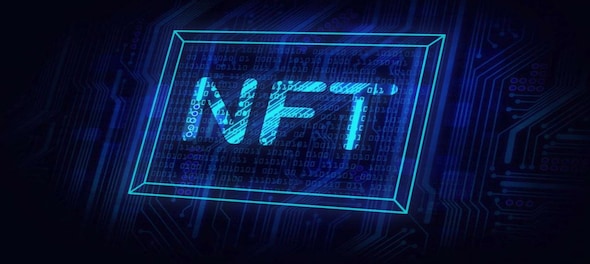
The introduction of NFTs marked a paradigm shift in the world of art. Ever since these digital artworks burst onto the scene in 2021, they have demanded astronomical price tags, with some of the most sought after NFTs selling for millions of dollars.
NFTs are also known to trigger gas wars, where users try to outmatch each other by paying higher transaction fees to purchase a particular artwork. The gas fee itself can run into thousands of dollars in such cases.
But why go to the trouble of buying an NFT when you can simply screenshot them? After all, an NFT is nothing but a digital artwork made of pixels, just like a screenshot. Even the world's most expensive NFT, Beeple: Everydays-First 5000 Days, is available for online viewing. One could easily take a screenshot of the same and pass it off as the original, right?
Well, not really. There are many reasons you can't do that. Firstly, it is illegal to screenshot an NFT and pass it off as your own. It is also illegal to post it online or make a physical copy. You could be sued for copyright infringement or other criminal charges if you do this.
A screenshot is not the same as the original NFT:
Imagine you are at an art exhibition taking photos of all the paintings. Tomorrow, if those paintings appreciate in value, are the images you took suddenly worth something? No, they're not. It's the same thing with an NFT. A screenshot is like a picture of a painting; it's worth nothing.
"Taking a picture of the Mona Lisa at the Louvre is not exactly the same as owning a piece from Leonardo da Vinci. The same concept can be applied to NFTs for digital artwork. By taking a screenshot of an NFT, does not make you the rightful owner of the artwork," Zach, the founder of Mintable, said in his blog.
But, at the same time, it is so easy to screenshot an NFT. Just look up the NFT online, and with a click of a button, you have a copy stored on your phone. Moreover, it's an exact replica of the original, unlike a reproduction of a painting that may have a few inconsistencies.
Won't this endanger the original artwork and its creator? Just because it is illegal doesn't mean bad actors won't try and sell these screenshots to unsuspecting buyers, making thousands of dollars in the process. As such, screenshots could jeopardise the entire NFT industry, right? Well, once again, not really. Screenshots are not the Thanos of the NFT world.
Screenshots are not a problem for the NFT industry. Here's why:
Screenshots are everywhere. We all have a screenshot of the Louboutins we want to buy, Patek Philippe watches we cannot afford, and posh Lamborghinis we dream of owning. But does that diminish the value of the real deal? No, it doesn't! You can also find fakes in every industry, and NFTs are no different. You can buy a fake Everydays NFT somewhere on the internet that looks exactly like the original one. However, it won't hold the same value as the real deal.
This is because NFTs serve as proof of ownership and a certificate of authenticity. Whenever an NFT is created, details of its creator and owner are stored on the blockchain for everyone to see. Every time the NFT is traded, information about its new owner is added to the blockchain. Therefore, an original Everydays NFT can be traced back to its creator, Beeple, and will also show how the NFT changed hands before landing up with its current owner.
Also Read: A look at the most expensive NFTs ever sold
However, an NFT of a screenshot can only be traced back to the scammer who minted it. And while it is easy to copy the artwork, no one can copy the tech behind the NFT, the tech that proves whether or not the work is original.
Some NFTs are more than just digital artworks:
Take, for instance, the Bored Ape Yacht Club (BAYC) NFTs. When you buy these digital artworks, you also gain access to the BAYC Discord server and the merchandise store. You will also receive early access to new collections produced by the BAYC team.
Or take the VeeFriends NFTs, for instance. These digital artworks also give you access to the VeeCon, a business conference and workshop hosted by serial entrepreneur and prominent internet personality Gary Vaynerchuck. Some of the rarer NFTs from this collection also entitle owners to one-on-one meetings and mentorship sessions with Vaynerchuck. Owners can use these meetings to flesh out business ideas, seek advice on their projects, or chit-chat with Vaynerchuck.
The same cannot be said with a screenshot or an NFT of a screenshot. Therefore, the only danger screenshots pose to the NFT industry is that unsuspecting buyers might fall prey to scammers trying to sell these copies as the real deal. An easy way to avoid this is to check the metadata of the NFT using a block explorer such as Etherscan.io. This will help determine the date the NFT was created, its location, the codec used to encode it, the character's name, its rarity, and its owner.
Also Read: What is the NBA Top Shot NFT collection?
Check out our in-depth Market Coverage, Business News & get real-time Stock Market Updates on CNBC-TV18. Also, Watch our channels CNBC-TV18, CNBC Awaaz and CNBC Bajar Live on-the-go!


Andhra Pradesh Lok Sabha elections: A look at YSRCP candidates
Apr 25, 2024 6:54 PM
Lok Sabha elections 2024: Banks and schools to remain closed in these cities for phase 2 voting
Apr 25, 2024 5:33 PM
Andhra Pradesh Lok Sabha elections: Seats, schedule, NDA candidates and more
Apr 25, 2024 5:16 PM

